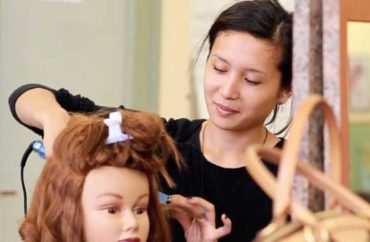
Some postsecondary education institutions, such as cosmetology schools, are funded heavily by the government despite providing poor returns to students, according to a report published July 14 by The Century Foundation, an independent think tank.
The high federal investment in a product that badly serves many students has prompted potential further regulation.
Cosmetology schools, which prepare hair stylists, makeup artists and manicurists, enrolled nearly 200,000 students and received more than $1 billion in 2018-19, according to the report.
“Students attending such programs typically borrow thousands of dollars through student loans and invest months of their time in training, only to receive near-poverty-level earnings after graduation, the report stated.
Proposed federal rules could shut down many cosmetology programs and other poor investments
This year, the Department of Education proposed a “gainful employment” rule that may force cosmetology schools to change their practices. Under this regulation, programs’ eligibility for federal Title IV funding (referring to federal financial aid) would be tied to a metrics including the graduates’ earnings compared to similar workers with just a high school diploma, the report stated.
If the program were implemented immediately, “nearly all cosmetology programs subject to the rule (98 percent) would not meet the very low benchmark, because program graduates earn less, on average, than workers with only a high school diploma,” according to the report.
Even more, the Department of Education wants to pressure schools to reduce training requirements to receive funding, thus making them more affordable, the report stated. Currently, cosmetology grads in many states must train for more hours than the average emergency medical technician and others entering riskier professions.
State licensure requirements are a primary driver of the high cost of cosmetology programs. All fifty states and Washington, D.C. require cosmetologists to obtain licensure, and all impose a minimum number of training hours as a requirement for licensure….Longer training hour requirements benefit cosmetology schools, since schools can charge higher tuition for longer programs. The regulatory hurdles that state licensure requirements create also make it harder for new competitors to enter the cosmetology field, benefiting cosmetologists….
State training hour requirements for cosmetologists vary widely, from 1,000-hour requirements in Massachusetts and New York, to more than double that number in Iowa, Oregon, and South Dakota. In many cases, the minimum training hour requirements exceed training hour requirements for professions that may pose greater public health and safety risks than cosmetology. For example, cosmetologists must complete, on average, eleven times as much training as the average emergency medical technician (EMT)….
Unsurprisingly, longer training hour requirements result in higher costs and higher student loan debt for cosmetology students.
The authors of the report support the proposed changes.
IMAGE: Marinello Schools of Beauty TV/YouTube
Like The College Fix on Facebook / Follow us on Twitter




Add to the Discussion